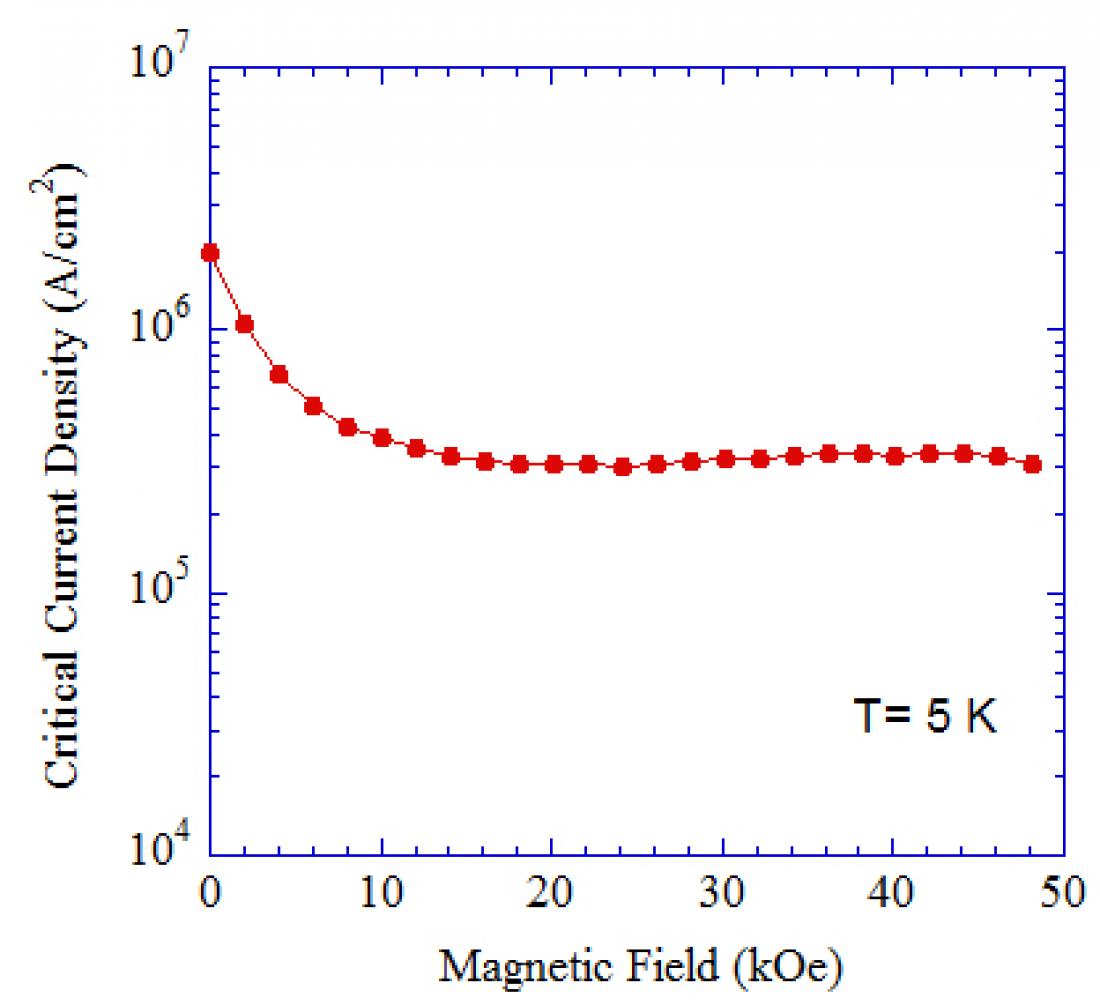Figure 3 Critical current density of the developed fullerene nanowhisker superconductor (5K). The critical current density remains constant over a wide range of field intensities, showing that this material has excellent superconducting properties.
The National Institute for Materials Science (NIMS; President: Sukekatsu Ushioda) succeeded in realizing superconductivity in fullerene nanowhiskers, which are a nanosized carbon material that is lightweight and has a fine fibrous shape. Among the conventional superconducting materials, superconductors with comparatively high superconducting transition temperatures were mainly intermetallic compounds or ceramics, and those were often heavy, hard materials.
This research will enable development of new thread-like and cloth-like superconducting materials called “Flexible, lightweight superconductors.” This research result was achieved through joint research by Dr. Yoshihiko Takano, Group Leader of the NIMS Nano Frontier Materials Group, Dr. Hiroyuki Takeya, a Chief Researcher of the same group, and a team headed by Dr. Kun'ichi Miyazawa, Group Leader of the NIMS Fullerene Engineering Group.
Superconductivity is expected to play a key role in solving many environmental and energy problems, as electrical energy can be transported with no loss. Fullerenes have attracted attention as a substance that may make it possible to realize this with lightweight carbon. The fullerene C60, which was discovered in 1985, is a carbon material in which carbon atoms are arranged in a shape resembling a soccer ball. It was also found that fullerenes display superconductivity when doped with a small amount of potassium. Because fullerenes are composed of carbon, high expectations are placed on this material as a “lightweight superconductor.” However, it was difficult to obtain good quality superconductors with the reaction process used until now, as the percentage of the fullerene feedstock which displayed superconductivity was extremely small, at less than 1% with treatment for one day.
In this research, the NIMS team succeeded for the first time in the world in realizing superconductivity in a fullerene-based material by adding potassium to fullerene nanowhiskers, which are a nano-sized thread-like substance that can be synthesized from fullerenes, and heat-treating the resulting nanowhiskers. Even when the material manifests superconductivity, it retains its fine, fibrous structure. Furthermore, substantially 100% of the specimen material becomes a superconductor with heat treatment for one day. From the results of magnetization measurements, the superconducting transition temperature is approximately 17K. The critical current density is extremely high, at 105A/cm2, even in a magnetic field, and the decrease in the critical current density accompanying increased field strength is slight. From these results, it is clear that this is an outstanding superconducting material.
Many materials with high superconducting transition temperatures, beginning with high temperature superconductors, MgB2, etc. are hard and brittle, and a high level of technology was necessary to process those materials into wire form, for example, for superconducting electrical wire. However, because the fullerene nanowhisker superconductor obtained in this research is lightweight, has a fine fiber-like shape from the initial stage, and maintains that fine, fibrous shape even after the appearance of superconductivity, it is considered that superconducting materials with diverse forms, such as a bundled fiber form, cloth-like form, and the like will be produced in the future. Thus, this achievement is a great advance toward the realization of lightweight, flexible superconductors.
This research result was achieved as part of the research topic “Research on Carbon-based Materials” (Research Representative: Yoshihiko Takano) of the Grant-in-Aid for Scientific Research on Priority Areas Program (Research Supervisor: Katsumi Tanigaki) of the Ministry of Education, Culture, Sports, Science and Technology (MEXT) and the NIMS project, “Development of Novel Nanocarbon Materials and Their Functionalization” (Sub-theme Leader: Kun’ichi Miyazawa). It is scheduled to be announced officially at the Meeting of the Project on Priority Research Areas (“New Materials Science Using Regulated Nano Spaces”) to be held at NIMS beginning January 5, 2012.



